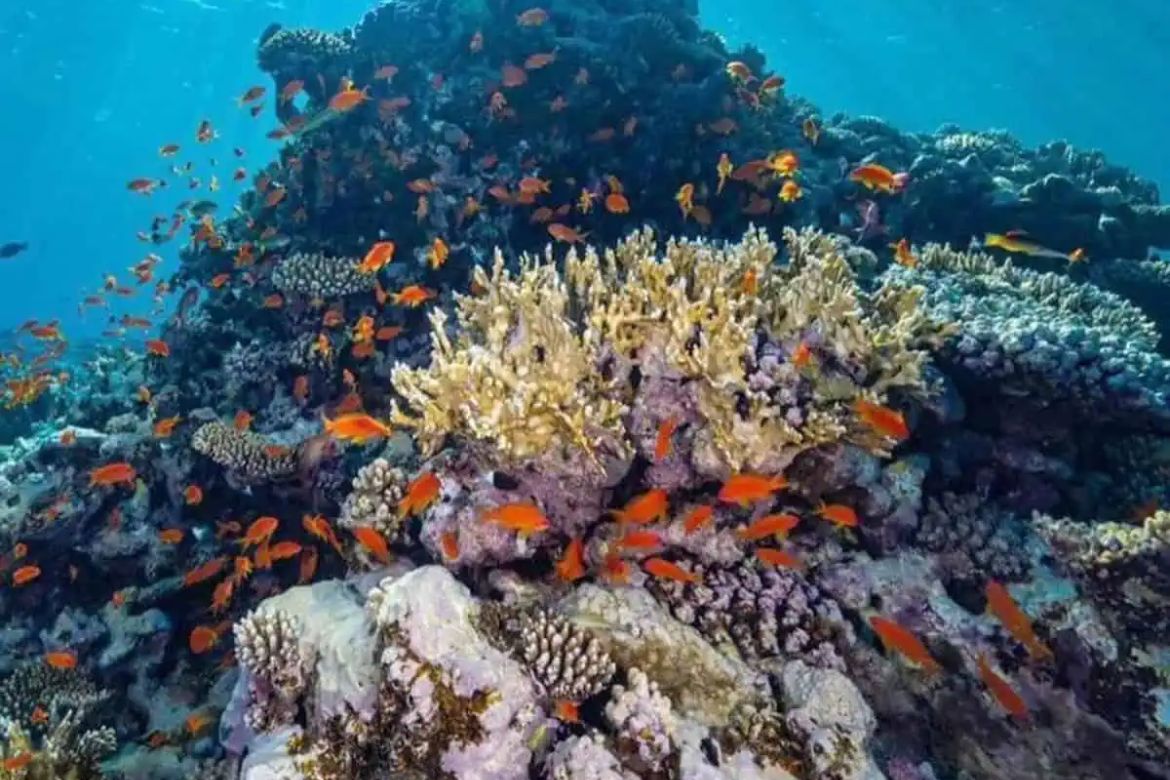In a world where the health of our oceans is increasingly under threat, a glimmer of hope emerges from the depths of the Red Sea. Saudi Arabia has recently unveiled plans for what promises to be the world’s largest coral restoration project, aiming to breathe new life into the vibrant marine ecosystems that call this region home.
Nestled along the shores of the Red Sea, Saudi Arabia boasts some of the most breathtaking coral reefs on the planet. However, like many marine environments worldwide, these fragile ecosystems have suffered greatly from the impacts of climate change, pollution, and overfishing. The once-thriving coral communities have faced bleaching events and degradation, leaving marine life struggling to survive.
Determined to reverse this trend, Saudi Arabia has embarked on an ambitious journey to restore its coral reefs on an unprecedented scale. Spearheaded by the Saudi Ministry of Environment, Water and Agriculture, in collaboration with international partners, the project aims to deploy cutting-edge techniques and innovative strategies to rehabilitate over 7,000 square kilometers of coral reef habitat.
At the heart of this initiative lies a commitment to harnessing the latest advancements in coral restoration science. Scientists and researchers will employ a variety of techniques, including coral transplantation, coral nurseries, and artificial reef structures, to accelerate the growth and recovery of damaged coral colonies. By cultivating resilient coral species and strategically placing them in suitable habitats, the project seeks to create a network of thriving reefs that can withstand the challenges of a changing climate.
One of the key focal points of the project is the establishment of coral nurseries, where fragments of healthy coral colonies are carefully cultivated and nurtured before being transplanted onto degraded reef areas. These nurseries serve as vital sanctuaries for coral fragments, providing them with optimal conditions for growth and development until they are ready to be reintegrated into the wild.
Furthermore, the project emphasizes the importance of community engagement and stakeholder collaboration in achieving its conservation goals. Local communities, fishermen, and dive operators are actively involved in the restoration efforts, playing a crucial role in monitoring reef health, collecting scientific data, and raising awareness about the importance of marine conservation.
Saudi Arabia’s leading university has unveiled a groundbreaking project in the Red Sea, touted as the world’s largest coral reef restoration endeavor. The King Abdullah University of Science and Technology (KAUST) initiative aims to cultivate hundreds of thousands of corals annually, marking a significant stride towards global reef restoration. This initiative gains paramount importance as coral reefs worldwide face the dire consequences of bleaching events triggered by escalating temperatures.
Named the KAUST Coral Restoration Initiative, the project has already established a functional nursery along Saudi Arabia’s north-western Red Sea coast, capable of producing 40,000 corals annually. Serving as a pilot project, it lays the foundation for a larger-scale endeavor slated for completion by the end of the next year, with an anticipated annual capacity of 400,000 corals.
Utilizing innovative techniques, such as coral nurseries akin to clotheslines, the initiative nurtures coral fragments until maturity, enabling their transplantation to damaged reef areas. This approach addresses the pressing need to rehabilitate coral ecosystems devastated by bleaching events, a phenomenon recently highlighted by the US National Oceanic and Atmospheric Administration (NOAA).
Acknowledging the urgency of the coral crisis, KAUST’s president, Prof Tony Chan, emphasizes the project’s role in pioneering scalable solutions to reverse the alarming rate of reef degradation. Leveraging the university’s expertise, the initiative seeks to upscale restoration efforts from labor-intensive methods to industrial-scale processes.
Situated within Neom, Saudi Arabia’s ambitious $500 billion megacity under construction, the project spans 100 hectares and will trial innovative restoration methods, deploying two million coral fragments. Neom’s chief executive, Nadhmi Al Nasr, underscores the city’s commitment to sustainability and environmental innovation, aligning with KAUST’s vision to preserve coral reefs for future generations.
Elsewhere in the region, the UAE’s Environment Agency in Abu Dhabi has been engaged in coral restoration since 2021, transplanting over 300,000 coral fragments to four sites. Additionally, scientists at New York University Abu Dhabi are conducting cross-breeding experiments to produce heat-tolerant corals, while Australian researchers explore reef shading techniques to mitigate the impact of rising temperatures.
Amidst mounting threats from climate change, ocean acidification, and human activities, these collaborative efforts exemplify a global commitment to safeguarding coral reefs, vital marine ecosystems essential for the planet’s ecological balance and biodiversity.
The scale and ambition of Saudi Arabia’s coral restoration project underscore the growing recognition of the urgent need to protect our oceans and preserve their biodiversity for future generations. By investing in innovative solutions and forging partnerships across borders, Saudi Arabia is setting a powerful example of environmental stewardship and demonstrating its commitment to safeguarding the natural treasures that lie beneath the waves.
As the world watches with anticipation, Saudi Arabia’s coral restoration project offers a beacon of hope for the future of our oceans. With dedication, innovation, and collective action, we can turn the tide and ensure that the underwater kingdoms of the Red Sea and beyond continue to thrive for centuries to come.



